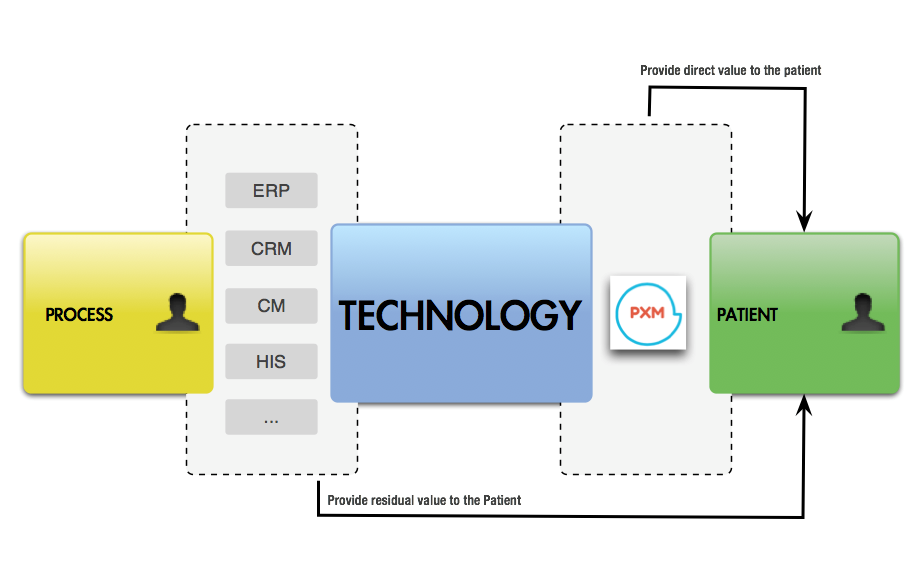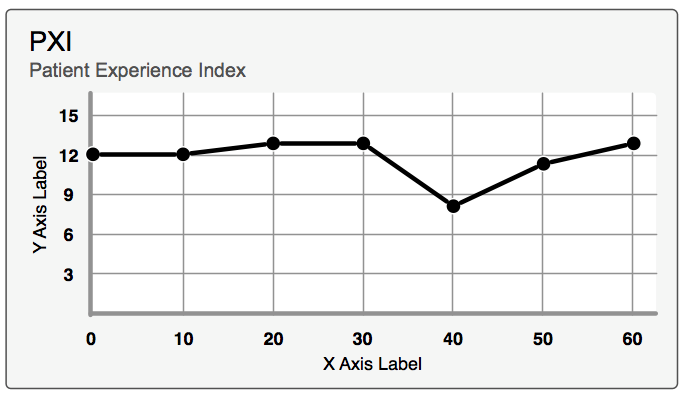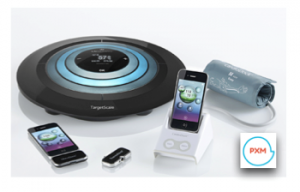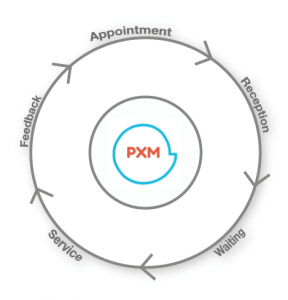The evolution in customer service in the commercial sector had a positive impact in others like government or health, giving as a result the creation of new care models based in the experience, focused on the value given by the people and not provided by the service they received. That adaptation to the world of health in conjunction with state of the art technology is framed in the discipline PXM.
What is Patient eXperience Management?
The discipline of Patient eXperience Management comes from an adaptation of its counterpart in the business world — Customer eXperience Management, which implies an rapprochement to the patient in terms of help and pins its main objective in the creation of experiences which enhance each one of the moments in touch with the patient, so that it is possible to obtain better clinical results during their hospital stay. For this reason it is not surprising there are an increasing the number of hospitals that are not only concerned with an effective management of the processes that influence in patient care, but also the patient’s experience.

Studies, taking place in the United States of America, related with the improvement in the Patient Experience have identified that the mission of a good PXM program is to:
- Create a model of attention focused in the Patient Experience from his or her perspective and also from the family.
- Accomplish the “Wow” effect in each patient that is creating an unbeatable Experience.
- Provide a good quality care, safe and efficient in adequate time and with the proper documentation.
- Be able to check information, which allows measuring the performance of each process alive (online) from the perspective of patient, in order to be able to act in a predictive way and not once an incident in the care attention had occurred.
- Supply the channels of communication to all the actors involved (care personnel and patients)
- Establish which are the most relevant emotions that we want to create and which are not in the patients and their companions, as to manage them in an effective manner they occur.
- Provide the means which allow to measure the satisfaction of the patient (PXI – Patient eXperience Index) in order to react in an immediate way before
any change in the highlighted standards, where among other things there could be measure the following;
- The perception of the patient related to the quality of the personnel who is charge of his or her care.
- The quality in the communication with the doctors.
- The fulfillment of the quality and service standards establish for each one of the processes.

Culture
The success in the implementation of the discipline PXM lies in the constancy and continuity and for that it is necessary to convert the participants (doctors, nurse teams and others members of the health care system, and patients) in the main actors, providing them with constant and updated information which brings value to each of their tasks whether for the care attention, in the case of the personnel, or for the improvement of the patient.
The efforts at the cultural organization level must be focused in using the technology for:
- Staff training programs
- Surveys of service satisfaction after the medical discharge, focused on the attention to the patient and companions (IVR, SMS, email, Call Center, etc.)
- Programs of effective recovery after eventualities (Disaster Recovery Plan).
- Provision of a balanced scorecard performance monitoring staff.
- Constant monitoring and control of the internal processes without losing the focus in the patient.
SmartHospitals using PXM
Once implemented the PXM discipline we do enter into the concept of SmartHospitals, due to the hospitals are provided with the technology which allow developing all these strategies which result in an improvement in the health care system and in the experience of the patient.
Let us see interesting data regarding with the new habits given by the usage of new mobile devices which help to understand we do get to the concept of SmartHospital and the success of PXM.
Nowadays with the use of mobile devices we can control and monitoring corporal weight, body-mass index, daily activities carried out, cardiac rhythm, blood pressure, glucose index, breath control, among other important values. If this technology has changed our habits is understandable that it will also change the way in which patients are taken care of and how do the diseases are treated.
An immediate communication between objects and persons will be the one which enables to take the patient experience in the health care sector to the next level, diminishing the costs in attention and improving the quality service.

Every day there are more people with technological knowledge who want to remotely monitor their health through digital tools, wishing to have access to their medical records, request and manage dates via internet, having remainders in their mobiles or email, even more personalized attention, contents according to their interest, etc.
Therefore, if the market of mobile devices is getting bigger everyday, the interconnection among objects keeps evolving (50 billion by the year 2020), the consumption patterns are getting simpler day by day and they are spread among people of all ages, and the software allows us to join together all these actors, we have as a result perfect scenery to make evolve the patient care culture. So let´s do it!
The challenges that PXM faces
Every new discipline faces obstacles at the moment of being implemented, some derived from the economy and others from the organizational culture. The five most noteworthy that must be faced at the moment of trying to implement a PXM solution are the followings:
- The cultural resistance towards changes and to do things different.
- The people in charge of implementing the management plans of the patient experience (if any) point in many different directions, without any consulting which provides them the appropriate guidance on the way forward.
- Other priorities at the organizational level over improving the patient experience.
- Lack of support by the doctors who do not want to get involved and become an active part of these change.
- Lack of budget and other required resources.
In order to overcome this obstacles we use the strengths of the discipline, due to this provides the hospital with a solution that allows the managerial area to control in an effective way all the interactions with the patient resulting in an easily management, and in an improvement in the processes due to the visibility that brings the interaction with the patient, an efficient communication platform which makes possible that all the actors are oriented in an effective manner and also with a substantial improvement in the expenses caused by each patient.

To figure out in which status is your PXM program, you must answer the following questions:
- Is developing a program of PXM included among the other hospital priorities?
- Is the management of the hospital oriented towards a change in order to improve their model of health care?
- Does your program of PXM follow the best marketing practices?
- How do your processes towards the patient have improve after implementing your PXM program?
- Do the metrics you actually have assist you improving the experience of the patient?
Among other questions, the last will give way to generate a self analysis in order to know in which position is your hospital in the implementation of a PXM program.




Excellent! Pleased to see more hospitals paying attention to patient/family experience. Baptist Health Care in Pensacola, FL – a Baldrige Award winner and Fortune Magazine 100 Best Companies to Work for in America listee – has been successfully doing this for years: http://customerthink.com/a_customer_centric_war_for_talent_battle_victory_in_healthcare/